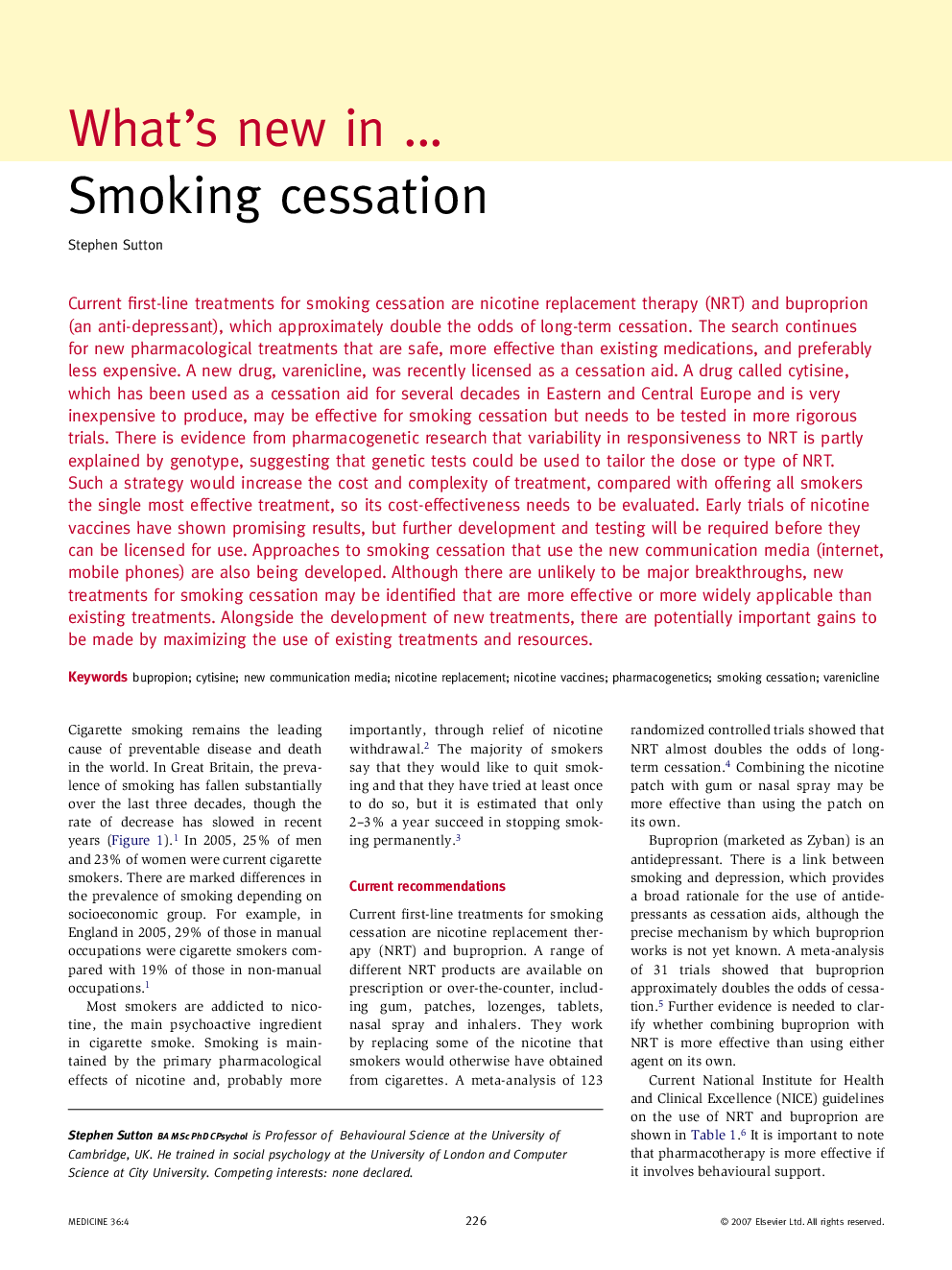| Article ID | Journal | Published Year | Pages | File Type |
|---|---|---|---|---|
| 3805643 | Medicine | 2008 | 4 Pages |
Abstract
Current first-line treatments for smoking cessation are nicotine replacement therapy (NRT) and buproprion (an anti-depressant), which approximately double the odds of long-term cessation. The search continues for new pharmacological treatments that are safe, more effective than existing medications, and preferably less expensive. A new drug, varenicline, was recently licensed as a cessation aid. A drug called cytisine, which has been used as a cessation aid for several decades in Eastern and Central Europe and is very inexpensive to produce, may be effective for smoking cessation but needs to be tested in more rigorous trials. There is evidence from pharmacogenetic research that variability in responsiveness to NRT is partly explained by genotype, suggesting that genetic tests could be used to tailor the dose or type of NRT. Such a strategy would increase the cost and complexity of treatment, compared with offering all smokers the single most effective treatment, so its cost-effectiveness needs to be evaluated. Early trials of nicotine vaccines have shown promising results, but further development and testing will be required before they can be licensed for use. Approaches to smoking cessation that use the new communication media (internet, mobile phones) are also being developed. Although there are unlikely to be major breakthroughs, new treatments for smoking cessation may be identified that are more effective or more widely applicable than existing treatments. Alongside the development of new treatments, there are potentially important gains to be made by maximizing the use of existing treatments and resources.
Related Topics
Health Sciences
Medicine and Dentistry
Medicine and Dentistry (General)
Authors
Stephen Sutton,
